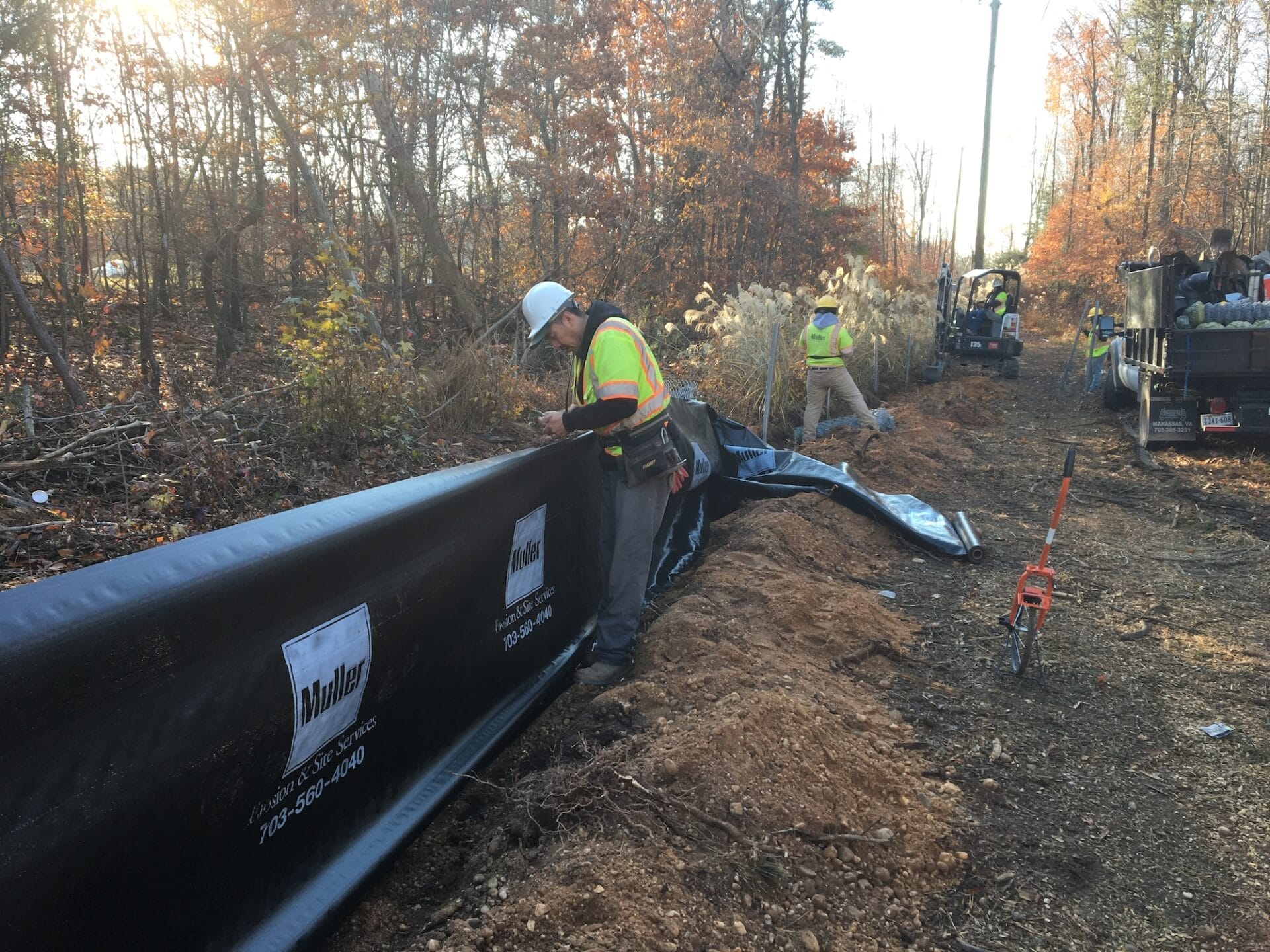General contractors are getting better at controlling pollution levels on construction sites. However, even the best-organized teams can still struggle to stabilize every inch and remove every pollutant, creating an environmental hazard when stormwater runoff ferries pollution into nearby watercourses.
The good news is that multiple stormwater management methods exist to reduce surface runoff and protect the downstream environment from harmful contamination.
Why Is Stormwater Runoff From Construction Sites Dangerous?
Stormwater runoff from construction sites harms the environment by picking up pollutants, including toxic chemicals, on impermeable surfaces and destabilized land areas. The water often gains speed as it moves downhill, adding harmful elements to the runoff. Consequences can include:
- Harm to local wildlife, including mass die-offs
- Health problems for local community members
- Toxic levels of pollutants in public water supplies
Construction Stormwater Best Management Practices (BMPs)
To deal with the risks stormwater runoff poses, the National Pollution Discharge Elimination System (NPDES) requires construction sites to follow various guidelines and set waste limit levels. Therefore, contractors must make provisions to collect polluted water, often via a drain or channel.
Critically, contractors must remain below accepted thresholds for the quantity of solid debris, bacteria, and pollutants released from the site. Going above that could mean breaking the law, leading to the shutdown of operations, criminal charges, and even jail time.
There are two types of construction site stormwater BMPs: structural and non-structural. Structural versions involve adding physical containment measures to sites to ensure that water flows in a safe direction. Contractors often add drainage systems and barriers to prevent pollutants from escaping.
Non-structural BMPs aim to prevent surface runoff from becoming an issue in the first place. These strategies often involve comprehensive planning and topological mapping and can include:
- Extensive use of green materials
- Taking advantage of natural watersheds
- Reducing soil disturbance
Top Strategies For Controlling Stormwater Runoff
The following section lists various strategies to control stormwater runoff and ensure you abide by NPDES regulations. Most construction site managers use a combination of the following techniques to get results.
Reducing Soil Disturbance
Reducing soil disturbance – a non-structural BMP – is a top priority of experienced construction site managers. Cutting the degree of soil exposure can prevent damaging runoff that scoops up silt and harms ecosystems by depositing it downstream.
Various methods can help with this, including:
- Minimizing the project’s footprint before breaking ground, looking for opportunities for small building layouts, and adjusting equipment positioning so that it remains in the built area
- Phasing construction, dividing it into smaller segments to make soil exposure more manageable and reducing the scale of disturbed areas
- Stripping and stockpiling topsoil before work begins and replacing it once complete
- Adding sediment barriers, such as straw bales or fences, to prevent silty water from escaping
- Planting fast-growing shrubs to extend roots and keep soil in place
- Adding micro-piles where structurally permissible instead of conventional foundations
Adding Terraced Slopes
Terraced slopes are another runoff control option: large channels to guide stormwater to more manageable locations, such as drains. Benefits include slowing and channeling fast-moving water, preventing it from picking up additional soil and improving filtration.
Essentially, terraces act like roadblocks, stopping water from cascading uncontrollably downhill. Levels in the slope break up its movement, slowing it down and spreading it out. This action gives the water more time to infiltrate into the soil below, reducing erosion and flooding risk.
You should start planning terraced slopes on your construction site before work begins. Erosion control specialists can guide you on optimal placement and implementation and help develop an overall erosion and sediment control plan for the site.
Conserving Existing Natural Features
Another strategy for controlling stormwater runoff on construction sites is to take advantage of existing natural features. This option reduces the cost and quantity of additional material needing transport to your site.
Examples of using natural features to control stormwater runoff include:
- Leveraging nearby trees and shrubs to slow down the rate at which rainwater reaches the ground
- Using natural depressions and swales and temporary water detention basins, preventing it from traveling into the main nearby watercourses immediately
- Preserving natural ridges around the site that could slow water runoff
- Maintaining healthy soil that acts as a sponge
Monitoring Your Site Entrance
Finally, it can help to monitor your construction site entrance, the main conduit for contaminants. Cleaning the area and using water-waste tracking stops pollution from escaping out of the front door.
Trust the Pros to Control Stormwater Runoff
Following runoff control best practices reduces your environmental and legal liability. Talk to Muller Inc. today to discuss how we can help you implement environmentally required control measures on your construction site.

